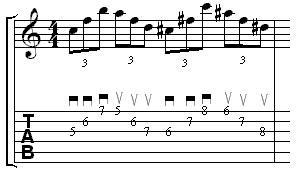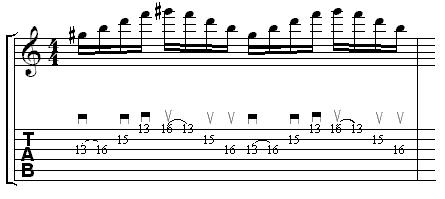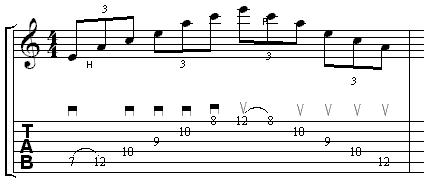Sweep Picking
Sweep picking is where a series of upstrokes or downstrokes are used to play notes on adjacent strings. Upstrokes are used when descending through the strings (from the 1st string to the 6th) and downstrokes are used when ascending. Normally, only one note on each string is played to achieve a swift arpeggio. Sweep picking can be distinguished from normal upstrokes and downstrokes because:
- The plectrum should pick the strings in one continuous motion (similar to a strum).
- Although it is a strum-like motion sweep picking should never sound like a strum. Each note should be articulated individually to create a single-note line.
Sweep picking can be used to provide a speed of playing that beats alternate picking but it does not always work, try both and see what suits you. Below is an example exercise to get you started. Play three notes for each beat of the metronome (if you haven't got a metronome then get one). Make sure each note is evenly spaced and accurately sounded.

Chords are usually used to provide a set of notes to sweep through and sometimes slurs are added. Slurs can add swiftness and enable you to fit more notes into the arpeggio. The following example shows sweep picking over a chord (D diminished 7th).

This next example is based around the an A minor chord:
